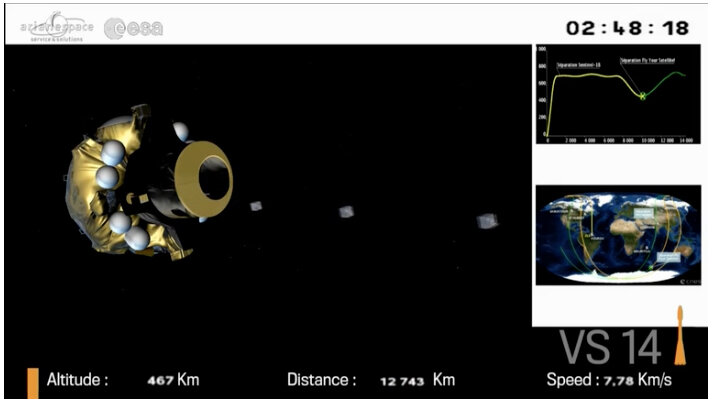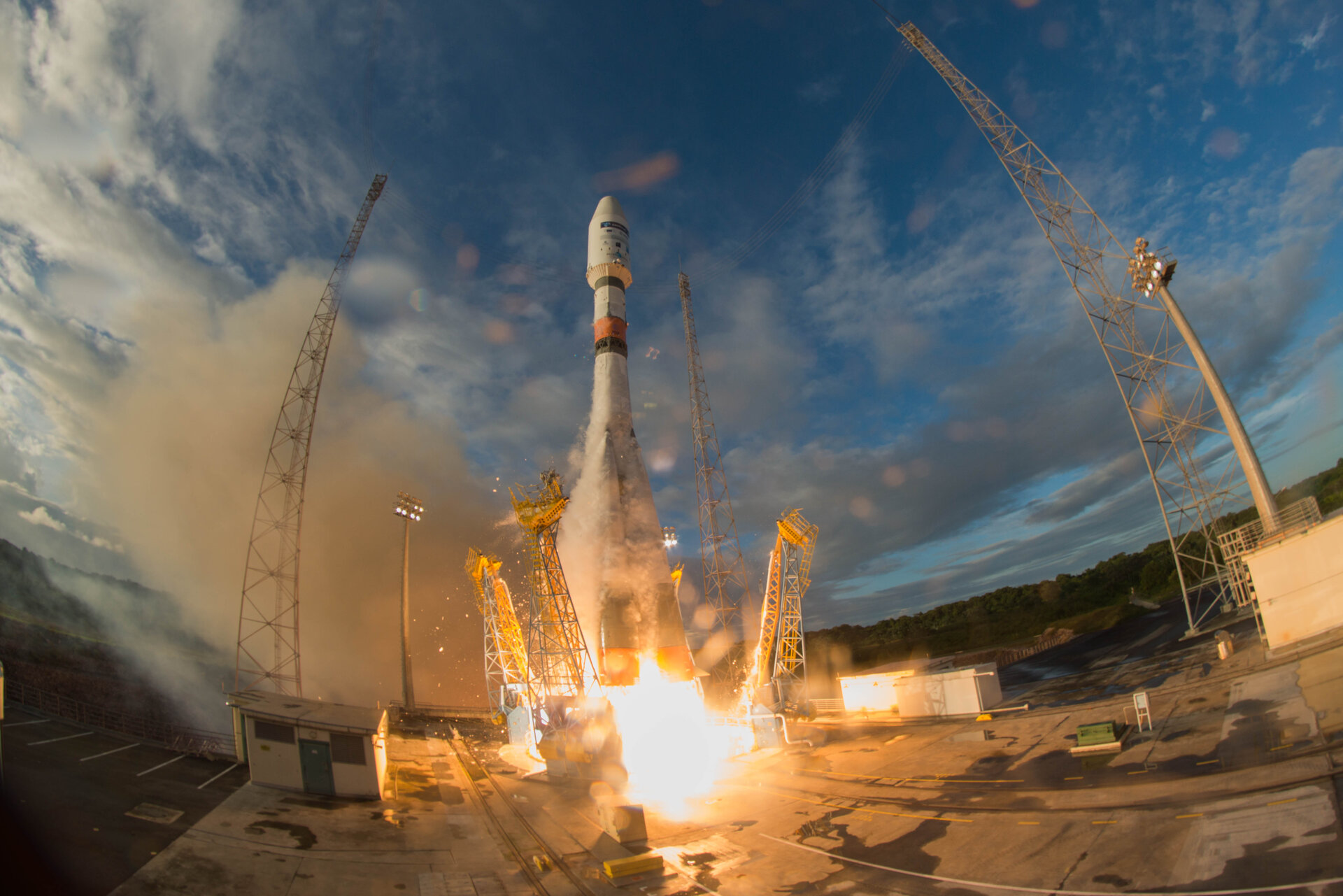Fly Your Satellite! teams now really go to work
For the students taking part in the ESA Education Office’s Fly Your Satellite! programme, the launch of their CubeSats marked the beginning of their missions. Now that the miniature satellites are in orbit, the teams are learning what it really means to ‘Fly Your Satellite!’.
The three small satellites, each measuring 10x10x11cm and weighing 1 kg, left Earth on 25 April 2016 at 23:02 CEST. They hitched a ride on a Soyuz rocket that blasted off from the European Spaceport in Kourou, French Guiana, to deliver the Sentinel-1B earth observation satellite into orbit.
Within 24 hours, signals were received from all three CubeSats, confirming that they had been deployed to orbit themselves and were ‘calling home’. The three spacecraft are OUFTI-1 from the University of Liège, Belgium; e-st@r-II from the Polytechnic University of Turin, Italy; and AAUSAT4 from Aalborg University, Denmark.
“Having your own project launched into space is so exciting! We have been working in the lab for a long time waiting for this moment. When we were notified that the first signal was received, I realised a dream was coming true!” says a student from the e-st@r-II team.

AAUSAT4 is designed to test the Automatic Identification System (AIS) for tracking ships on navigation routes, mainly around Denmark and Greenland. By now the team has already downloaded a lot of AIS data and is in the process of fine tuning the system.
The received data shows that the CubeSat is in the best of health, all subsystems are working correctly and the conditions on the spacecraft are within the expected range. No anomalies have occurred and so the on-board computer has functioned continuously without the need for any re-boots.
“We are now getting down to the real work and learning what running a space mission is all about.It’s a great feeling!”, says a student from AAUSAT4.
e-st@r-II is designed to demonstrate an attitude control system that uses measurements of the Earth’s magnetic field. However, it is proving to be a little shy. Although a signal was picked up on the correct frequency at the correct time soon after launch, it was too weak to be decoded.

A concerted effort by radio amateurs around the world yielded a decoded signal on 2 May but it is now clear that the CubeSat is not transmitting as strongly as it should. The student team therefore found that their Fly Your Satellite! experience took a different turn.
Instead of operating their mission, they have been given a masterclass in how engineers diagnose problems on spacecraft. It is a painstaking, step-wise process that cannot be hurried and involves excluding as many possible causes for the problem as possible to be able to home in on the root cause.
To listen even harder to the spacecraft, the team also received help from the 25-metre radio telescope in Dwingeloo, The Netherlands.
“The days after orbit injection have been crazy!” says a student working on the mission, “We had a team meeting with Professor Corpino who told us: ‘Ok guys, e-st@r-II needs your help. This is a challenge that you cannot skip!’ We started then to work hard on two fronts: receiving and decoding telemetry data, and running a fault tree analysis to understand what was going wrong. I have been personally involved in the development of software to decode the telemetry packets despite the very weak transmission signal, and the nice thing is that it works!”
Work continues but one thing is certain: e-st@r-II cannot be in better hands. Even if the communications cannot be brought up to strength the team is obtaining important information regarding the issue, which will serve as invaluable lessons learned for the students to apply to their future projects.

The third CubeSat, OUFTI-1, is designed to test a new radio amateur transmission protocol. Its first signal was picked up soon after it was deployed from the launch rocket, and during the first 12 days in orbit it was heard by radio amateurs all over the world. They forwarded more than 500 reports to the OUFTI-1 mission team, including recordings of the satellite’s transmissions and decoded telemetry data.
However on 7 May 2016, OUFTI-1 fell silent. Investigations are on-going to determine the root cause of this failure, with the hope of then recovering the mission.
So, like their e-st@r-II colleagues, the OUFTI-1 team are also learning how to investigate the anomalous behaviour of their satellite. Starting on 10 May they began uploading commands to the spacecraft with the aim of triggering a reset or a reaction. So far, OUFTI-1 remains silent.
The Fly Your Satellite! programme is just one endeavour from ESA’s Education Office, that is designed to help train the next generation of European space professionals.
“Having the Cubesat launched into orbit has been emotional. Seeing the happy faces of my students in that moment has been the most valuable reward for me. I followed their work in the past months and I know how much effort, time, and energy they put into it. Apart from the technical success of the mission, from my point of view the most important result of the project is that all the students had a fantastic learning experience which will be part of their professional background forever,” says the e-st@r-II academic advisor.











